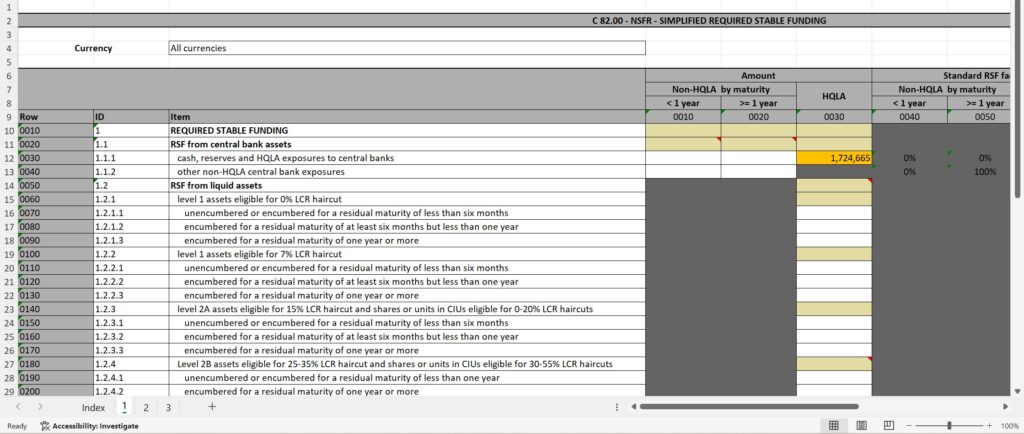Net Stable Funding Ratio(NSFR)
The NSFR (Net Stable Funding Ratio) is a banking regulation under the Basel III framework that requires a bank to maintain a stable funding profile in relation to its assets and off-balance sheet activities. It is calculated as the ratio of Available Stable Funding (ASF) to Required Stable Funding (RSF), and it must be at least 100% to ensure long-term stability. The NSFR encourages banks to rely on more durable funding sources and mitigates the risk of funding shortfalls by reducing reliance on short-term wholesale funding.
NSFR explained
- Goal: To promote long-term resilience by ensuring that a bank’s long-term assets are funded with stable liabilities, reducing the risk of a liquidity crisis.
- Purpose: To limit overreliance on short-term wholesale funding and encourage a better assessment of funding risk over a one-year horizon.
- How it works: It assesses the stability of a bank’s funding sources (like customer deposits and long-term debt) and the liquidity characteristics of its assets (like loans and securities).
Key Components of NSFR
Key components:
- Available Stable Funding (ASF):The portion of a bank’s capital and liabilities expected to be reliable over a one-year horizon. Factors are assigned to different funding sources, such as equity, long-term debt, and stable deposits.
- Required Stable Funding (RSF):The amount of stable funding needed for the bank’s assets and off-balance sheet activities, based on their liquidity characteristics and residual maturities.
NSFR Vs. LCR
NSFR vs. LCR:
- NSFR: Focuses on long-term funding stability over a one-year horizon.
- Liquidity Coverage Ratio (LCR): Focuses on short-term liquidity resilience over a 30-day stress period, ensuring a bank has enough high-quality liquid assets to meet its net cash outflows.
NSFR Spreadsheet

